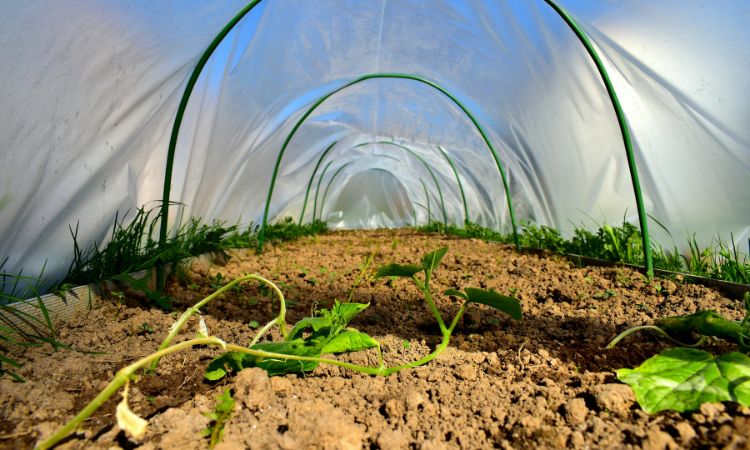In recent years, the agricultural sector has experienced significant transformations, particularly in the way crops are cultivated. One of the key innovations driving this change is the use of greenhouse films, which are essential for optimizing growing conditions in controlled environments. The global greenhouse film market size stood at a value of around USD 8.63 billion in 2023. The market is further expected to grow at a compound annual growth rate (CAGR) of 10.6% in the forecast period of 2024-2032, reaching an estimated value of USD 21.30 billion by 2032. This significant growth is driven by factors such as the expansion of agricultural practices, advancements in film technology, and increasing global demand for food security.
Market Overview
Greenhouse films are a key component in modern agricultural practices, offering an efficient and cost-effective way to protect crops from environmental factors such as extreme temperatures, pests, and disease. These films are typically made from various types of plastic and are designed to regulate light, temperature, and humidity inside a greenhouse, which in turn enhances crop yield and quality.
The growing focus on sustainable agriculture, climate-resilient crops, and increasing greenhouse farming across both developed and developing regions are some of the factors fueling the expansion of the greenhouse film market. Farmers and horticulturists are increasingly turning to greenhouse films as they offer higher yields, extended growing seasons, and reduced dependency on pesticides.
The market’s expansion can be attributed to several factors, including:
- Technological advancements in film production, such as UV-resistant coatings and anti-fog properties.
- The need for efficient resource management due to water shortages and soil depletion in various regions.
- Increasing adoption of sustainable farming practices to combat climate change.
Market Segmentation
The greenhouse film market can be segmented based on plastic type, thickness, width, and application. Let’s take a closer look at these segments.
By Plastic Type
The material composition of greenhouse films plays a crucial role in determining their performance and cost-effectiveness. The most common types of plastic used in the greenhouse film market are:
- Low-Density Polyethylene (LDPE): LDPE is widely used due to its flexibility, durability, and ability to provide excellent light diffusion. It is ideal for general-purpose greenhouse films and is relatively low in cost. This plastic type is expected to hold a significant share of the market throughout the forecast period.
- Linear Low-Density Polyethylene (LLDPE): LLDPE films offer greater tensile strength and better resistance to punctures compared to LDPE films. This type of film is preferred for applications where durability and resistance to external factors such as wind and rain are essential.
- Polyvinyl Chloride (PVC): PVC films are often used in high-end greenhouse structures. They are more rigid than LDPE and LLDPE films, providing excellent insulation and UV resistance. PVC films are gaining popularity due to their longevity and superior protection.
By Thickness
Greenhouse films come in various thicknesses, each suitable for specific applications. Thicker films are generally more durable but cost more and are often used in areas with harsher environmental conditions. Thin films, on the other hand, are less expensive but may not provide as much insulation or long-term protection. The growing trend toward sustainability and eco-friendly practices is also driving the demand for thinner, more efficient films.
By Width
Greenhouse films are available in varying widths depending on the size of the greenhouse structure. Wider films can reduce the need for seams and joints, improving the structural integrity of the greenhouse. However, the demand for customized width films is also increasing, particularly for specialized applications and smaller greenhouse operations.
By Application
Greenhouse films are primarily used in agriculture and horticulture, but their applications extend beyond these areas. The major applications include:
- Agriculture: Greenhouse films are primarily used for growing fruits, vegetables, and other crops in controlled environments, enabling farmers to optimize growing conditions.
- Horticulture: In the horticulture sector, greenhouse films are used to grow flowers, herbs, and ornamental plants. The films provide ideal light conditions for these delicate plants, improving growth rates.
- Other Applications: Emerging uses of greenhouse films include applications in vertical farming, aquaponics, and hydroponics, where the controlled environment plays a crucial role in crop success.
Regional Analysis
The greenhouse film market is experiencing diverse growth patterns across different regions, each with its unique demands and challenges.
- North America: The U.S. and Canada are leading players in the adoption of greenhouse films, driven by advanced agricultural practices, technology integration, and the increasing trend toward sustainable farming. With strong R&D capabilities and significant investments in agricultural technology, North America is poised for substantial growth during the forecast period.
- Europe: Europe has been a key adopter of greenhouse films, particularly in countries like the Netherlands, Spain, and Italy, which have robust greenhouse farming operations. Stringent environmental regulations and a strong focus on reducing carbon emissions are likely to fuel the demand for innovative, energy-efficient films in this region.
- Asia-Pacific: The Asia-Pacific region is expected to see the fastest growth in the greenhouse film market, especially in countries like China, India, and Japan. With rapid urbanization, increased food demand, and government support for modernizing agricultural practices, the market in this region is expected to expand rapidly.
- Latin America: In Latin America, countries like Mexico, Brazil, and Argentina are increasingly adopting greenhouse farming practices due to the region’s favorable climate conditions. The need for more efficient water and resource management is driving the demand for greenhouse films.
- Middle East & Africa: The region’s harsh climatic conditions make greenhouse farming an attractive option. Greenhouse films are essential for mitigating the effects of extreme temperatures and ensuring consistent crop production.
Market Dynamics
SWOT Analysis
- Strengths: The durability and efficiency of greenhouse films significantly improve crop yield and quality, which is a major strength of the market. These films also provide significant cost savings for farmers in terms of water and energy use.
- Weaknesses: The environmental impact of plastic waste and the potential for film degradation due to UV exposure are notable weaknesses.
- Opportunities: Innovations in biodegradable films and environmentally friendly materials present opportunities for market growth.
- Threats: Rising concerns over plastic pollution and regulatory pressures on plastic use could pose challenges to market growth.
Porter’s Five Forces Analysis
- Threat of New Entrants: The market has moderate entry barriers, but establishing a competitive presence requires significant investment in production and distribution channels.
- Bargaining Power of Suppliers: Suppliers of raw materials like polyethylene and PVC have a moderate impact on the pricing dynamics of greenhouse films.
- Bargaining Power of Buyers: Large agricultural corporations have strong negotiating power due to bulk purchasing, while small-scale farmers have less bargaining power.
- Threat of Substitutes: The main substitutes include glass, polycarbonate, and other alternative materials.
- Industry Rivalry: Intense competition among major players drives continuous product innovation and price adjustments.
Competitive Landscape
Major players in the greenhouse film market include companies such as RKW Group, AEP Industries, Agriplast, and Ginegar Plastic Products, among others. These companies are focusing on expanding their product portfolios, integrating advanced technology, and forming strategic partnerships to maintain a competitive edge. Companies are also investing in sustainability initiatives, such as producing recyclable and biodegradable films, to cater to the growing demand for eco-friendly solutions.
Future Outlook and Market Trends
The greenhouse film market is set to continue its growth trajectory over the next decade. Innovations in film technology, such as smart films that can regulate temperature and humidity or films that capture and utilize solar energy, will drive future market developments. Additionally, the adoption of biodegradable greenhouse films and advancements in materials science will play a critical role in meeting sustainability goals.



